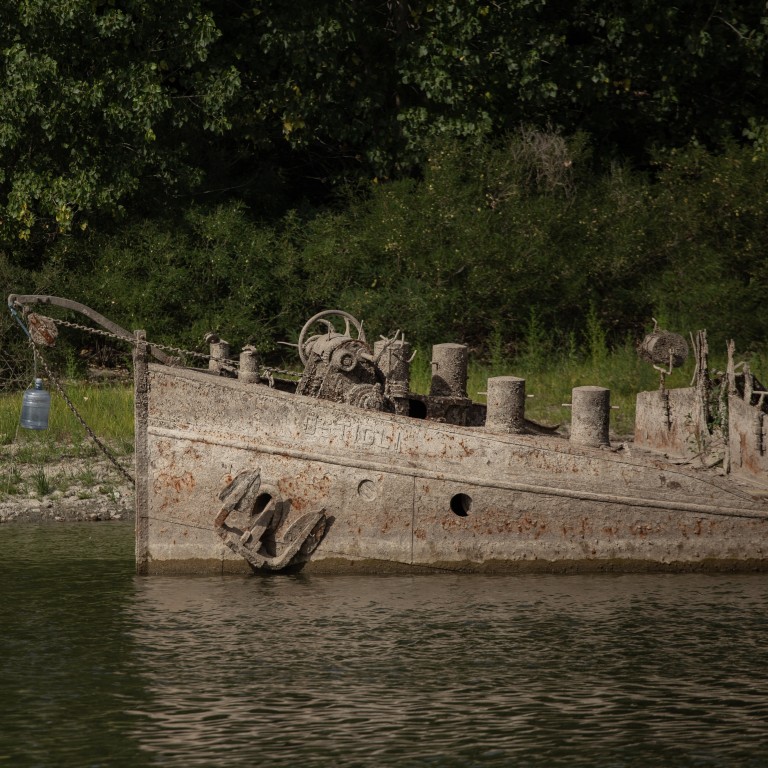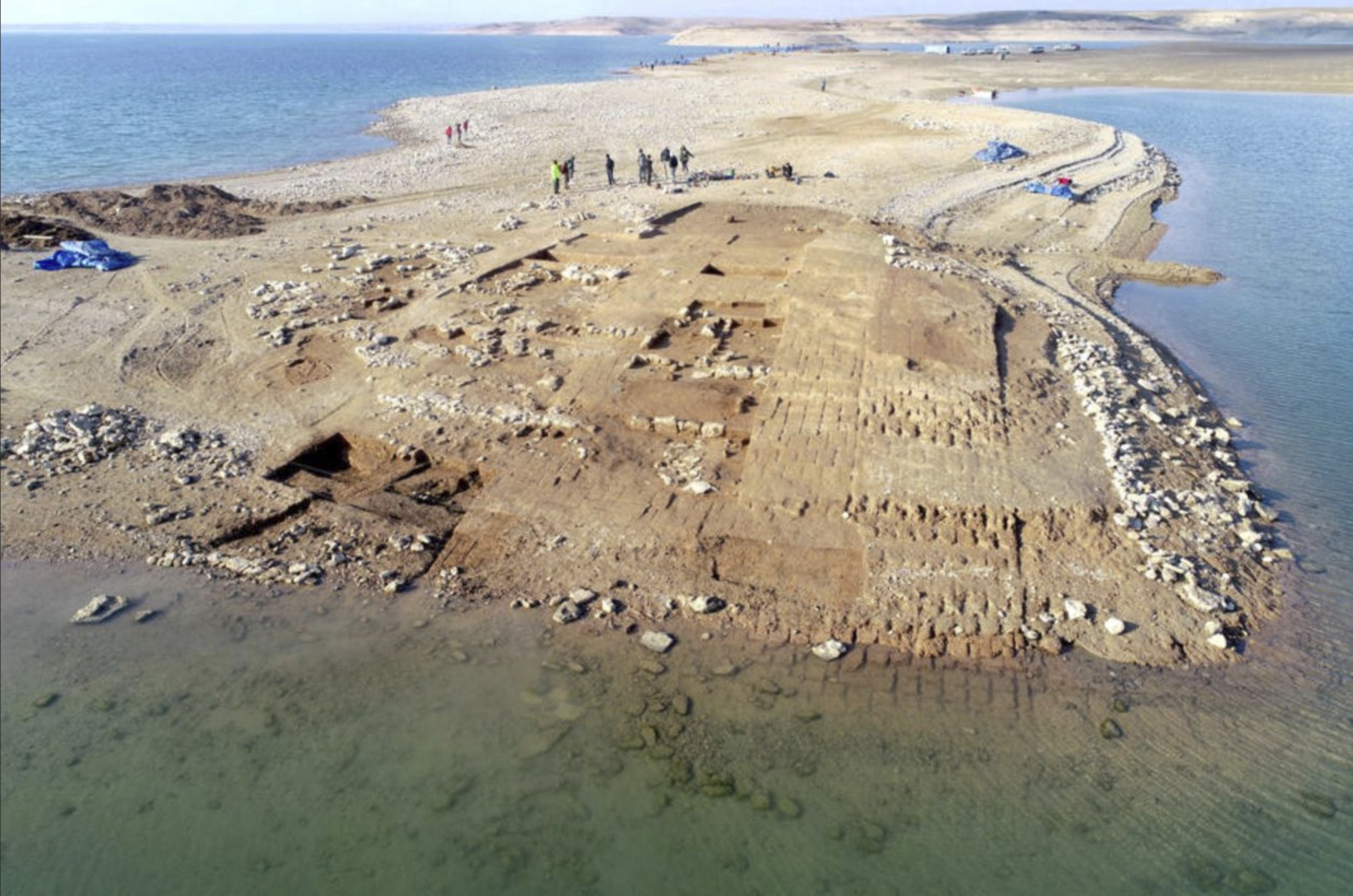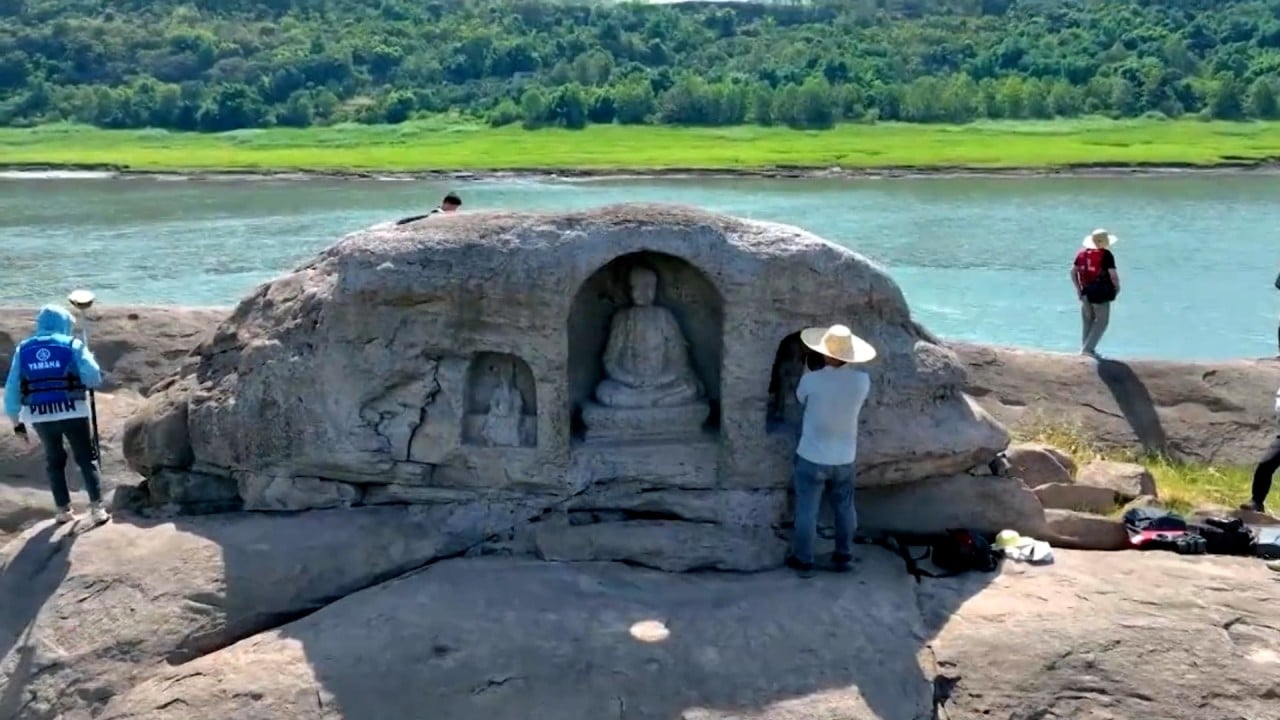
How archaeologists handle once-submerged ruins revealed during a summer of droughts
- Low water levels across the world led to interesting objects that were once submerged suddenly becoming accessible
- It is the job of archaeologists to try to glean as much information as possible in a highly constrained setting
China has spent the summer of 2022 grappling with a brutal heatwave and a severe drought, leading to the lowest water levels along the Yangtze River since 1865.
Similar instances have happened worldwide, as once-submerged historical artefacts in the US, Europe and the Middle East are suddenly easily accessible on land.
“Depending on if it is deemed a ‘crisis’, there are some avenues for emergency funding, and in that situation there may be a mad-dash of archaeological mapping and excavation,” said Anna Marie Prentiss, a regents professor of anthropology at the University of Montana in the US.
A recent example of a mad-dash occurred in Iraq in January when archaeologists had to race to investigate an ancient city after authorities drained part of a reservoir to provide water for crops amid a drought.
The team was given just weeks to examine a 3,400-year-old city from the Mittani Empire that was built around the Tigris river before it would be flooded again.
They mapped the city successfully and discovered new and exciting buildings. But, because of time constraints, they were limited in what they could accomplish, so the scientists retrofitted the ruins with a tightfitting plastic to offer an extra layer of protection for future digs.

“In an emergency dig like that, you are always digging way too fast, you sacrifice some context, quality of data is traded off for getting more stuff under the assumption that if the site is totally lost you would not get anything,” said Prentiss.
“You try to get enough done to make sense of whatever it is you are studying, or in this situation, to mitigate any anticipated adverse effects.”
As for deciding whether archaeologists would excavate a site, it depends on factors such as government interest in the ruins, economic viability, the ability to excavate the site safely and whether it is under threat of further damage if it is not researched quickly.
Michael Rivera, a bioarchaeologist and biological anthropologist at the University of Hong Kong said: “If a particular region is already known to be a significant site of human history then it becomes a necessity to at least rush to the site and record as much information as we can before climate affects access again.”
He also pointed out that climate change not only reveals artefacts, but rising sea levels and increased flooding also cover archaeological sites that scientists might have assumed were in relatively safe locations.
It is also not a guarantee that newly unearthed sites will be excavated, as the financial realities of archaeology require a balancing act.
Prentiss said a small archaeological excavation in more remote Arctic sites could cost upwards of US$100,000 per week, and underwater excavations are “extraordinarily expensive”.
It becomes a blunt decision of whether to finance a team to investigate a World War II shipwreck uncovered in Italy or an ancient city in Iraq that will soon be flooded.
Christina Cheung, a post-doctoral researcher at Vrije Universiteit Brussel in Belgium, said that in most places she has worked, well-known archaeological features are kept relatively untouched for as long as possible.
“Excavations mostly happened only when there is a need for it, like in rescue excavation,” she said. “For underwater remains, that is even more true, as objects are preserved differently underwater. If you take them out, you will have to put in a lot of work to preserve and maintain them properly.”
However, she added that modern technology such as 3D imaging and casting helps researchers save information to analyse later.
Regardless of how an individual site is handled, what is clear is that climate change is impacting archaeology, revealing new sites while threatening others.
To this effect, Unesco, the UN’s heritage body, has released several reports over the past few years detailing the threat of climate change to cultural heritage sites.
In 2016, the agency wrote: “Some of the archaeological resources that can provide insights for our future by opening windows on the past are in danger of being lost, particularly in rapidly warming Arctic regions and along eroding coastal and riverine sites.”


